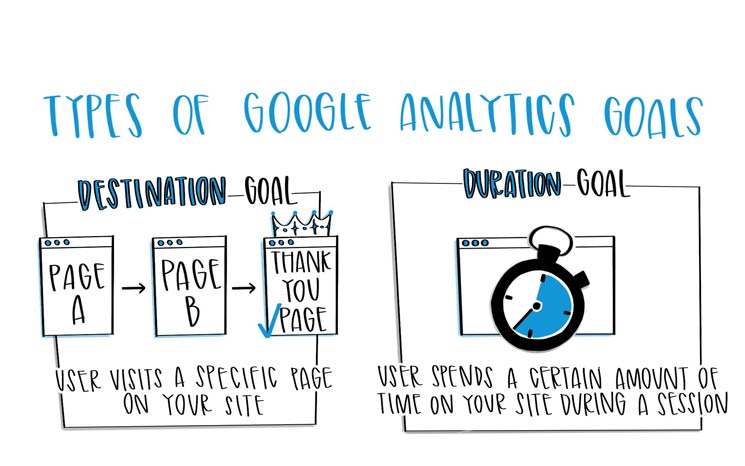What Data Is Google Analytics Goals Unable to Track: Crucial Details
What Data Is Google Analytics Goals Unable to Track: Crucial Details
Blog Article
Discover the Limitations of Google Analytics Goals: Revealing the Information Types That Remain Untrackable
As businesses progressively depend on data-driven decision-making, understanding the limitations of tools like Google Analytics comes to be critical. While Google Analytics Goals offer important insights into customer communications, there exist information kinds that thwart tracking, posturing challenges to a thorough understanding of customer actions.
Incomplete Individual Journey Tracking
Insufficient individual journey monitoring within Google Analytics can impede the capacity to precisely assess user habits. When the user journey is not completely tracked, there are voids in the information that avoid a comprehensive understanding of just how customers interact with an internet site. This lack of insight can cause missed out on possibilities for optimization and renovations to the customer experience.
One common problem with incomplete user journey tracking is the inability to see the complete path that customers take previously finishing a goal or leaving the site. Without this information, it is challenging to identify where individuals might be running into challenges or rubbing points that stop them from transforming. Furthermore, incomplete tracking can cover the impact of specific advertising initiatives or site changes on individual actions.
To resolve this restriction, it is essential to establish up proper monitoring systems within Google Analytics to record the entire individual journey. This might include establishing occasion tracking, objective funnels, or making use of tools like Google Tag Manager to ensure that no vital communications go unrecorded. By obtaining an extensive view of the individual trip, internet site proprietors can make even more enlightened decisions to improve user engagement and drive conversions.
Acknowledgment Challenges
Navigating through acknowledgment difficulties in Google Analytics requires a comprehensive understanding of how different touchpoints add to the overall conversion process. Attribution challenges occur from the intricacy of contemporary customer journeys, where individuals communicate with multiple channels prior to transforming.
One usual acknowledgment challenge is the trouble in associating conversions to the appropriate source, especially in cases where users connect with numerous networks prior to converting. In addition, cross-device monitoring positions another acknowledgment difficulty, as individuals commonly switch over between tools throughout their journey, making it testing to track their communications effortlessly.
Offline Conversions
Offered the obstacles related to associating conversions precisely in online channels, the dimension of offline conversions offers a substantial possibility for marketing experts seeking a much more comprehensive understanding of their consumers' trip. Offline conversions describe activities that customers take in the real world, such as making purchases in brick-and-mortar shops or over the phone, attending occasions, or involving with printed products - what data is google analytics goals unable to track. These conversions are essential for their explanation services that run both online and offline, as they give important insights into the efficiency of advertising campaigns throughout different touchpoints
Tracking offline conversions traditionally posed a considerable obstacle for online marketers, as it was testing to link these actions back to particular online interactions properly. With innovations in innovation, such as the integration of CRM systems, distinct identifiers, and voucher codes, organizations can now connect the gap between online and offline information to obtain a more holistic sight of customer actions. By successfully measuring offline conversions, marketers can maximize their approaches, assign sources extra effectively, and ultimately improve the total client experience.
Cross-Device Monitoring
Cross-device tracking plays a crucial duty in understanding the interconnected nature of customers' digital communications throughout several devices. In today's omnichannel globe, where users flawlessly change in between smart devices, tablet computers, and desktop computers, tracking their actions across these tools is necessary for online marketers to acquire a thorough sight of their customer trip.

Furthermore, privacy problems and regulations such as GDPR and CCPA have further difficult cross-device tracking. With users demanding even more control over their information and enhanced limitations on tracking innovations, online marketers must locate privacy-compliant and cutting-edge ways to link user interactions throughout gadgets.
Dynamic Content Engagement
Understanding user check this interaction with vibrant web content is essential in optimizing electronic marketing methods for enhanced audience communication. Dynamic web content describes web site components that transform based on customer behavior, choices, or various other aspects, offering a tailored experience. Nonetheless, tracking individual communications with vibrant web content presents challenges for traditional analytics devices like Google Analytics.
While Google Analytics can track fundamental interactions like clicks and page views, it might struggle to capture more nuanced engagements within vibrant content. what data is google analytics goals unable to track. Metrics such as time invested in certain vibrant elements, float activities, or interactions within pop-ups are usually not conveniently quantifiable making use of typical tracking approaches. This constraint prevents marketing experts' capability to totally understand how users are involving with vibrant content and tailor their methods as necessary

Final Thought
In verdict, Google Analytics objectives have limitations in tracking incomplete user trips, connecting conversions accurately, recording offline conversions, tracking cross-device interactions, and gauging vibrant web content engagement. These restraints highlight the importance of exploring added monitoring techniques and tools to obtain a more comprehensive understanding of customer habits and conversions beyond what Google Analytics can supply.
While Google Analytics Goals deal useful insights right into individual interactions, there exist data kinds that thwart monitoring, positioning challenges to a comprehensive understanding of user habits.Incomplete individual trip monitoring within Google Analytics can impede the capability to properly analyze individual behavior. When the individual trip is not totally tracked, there are voids in the data that stop a detailed understanding of just how individuals communicate with a site.One usual issue with incomplete customer journey monitoring is the failure to see the full course that individuals take in the past finishing an objective or leaving the website. By obtaining a detailed view of the individual journey, site owners can make even more informed decisions to improve individual involvement and drive conversions.
Report this page